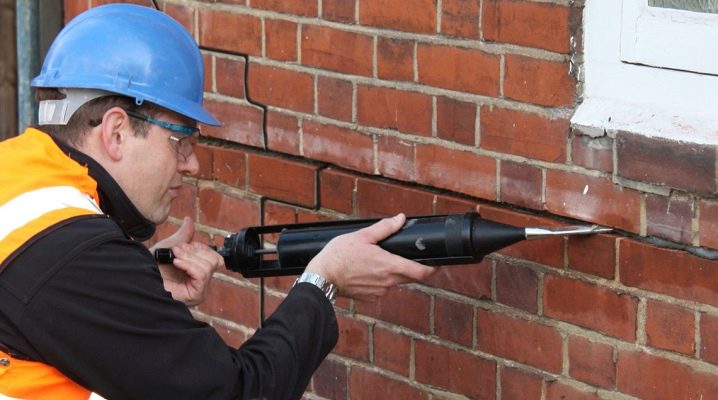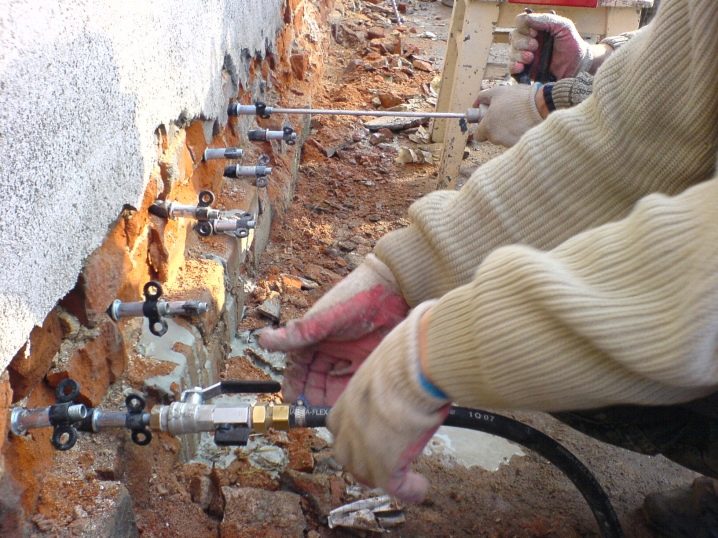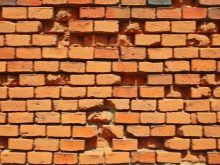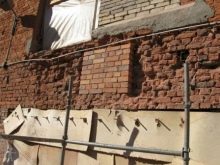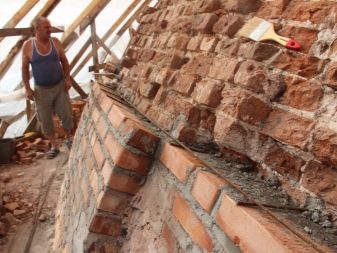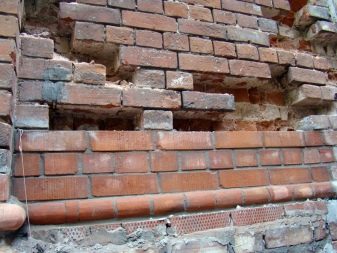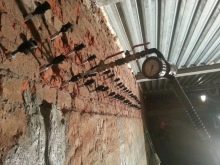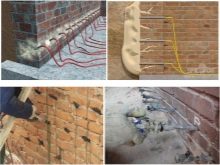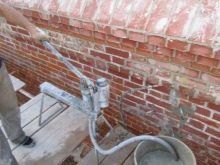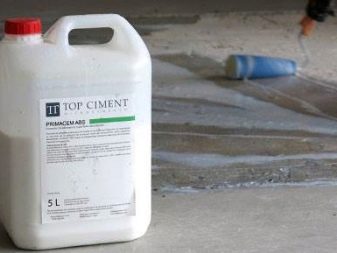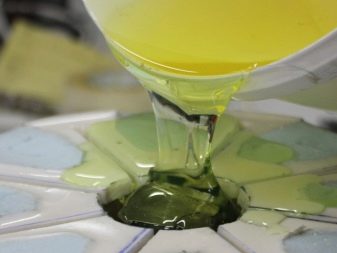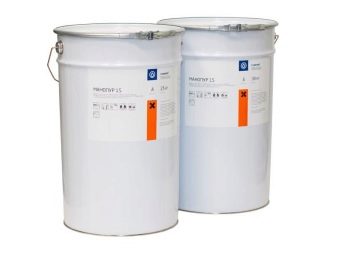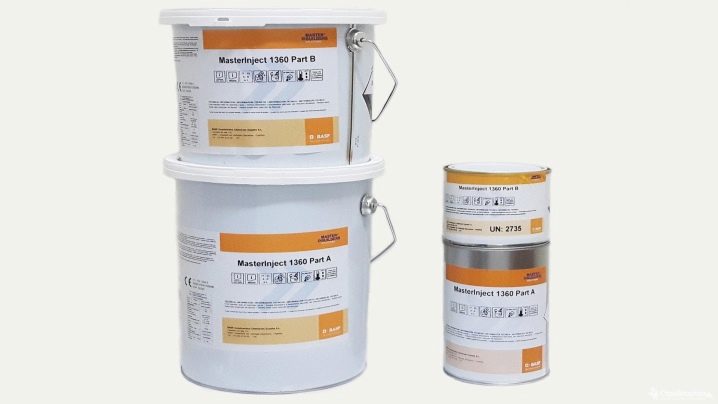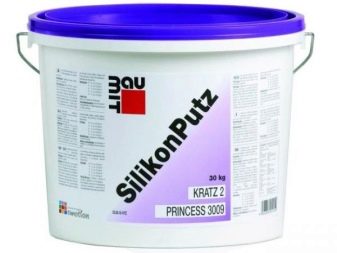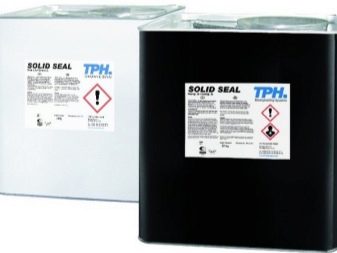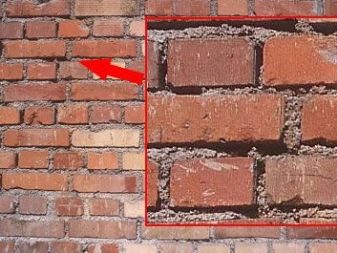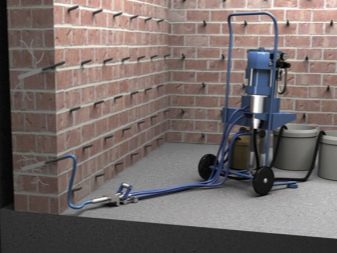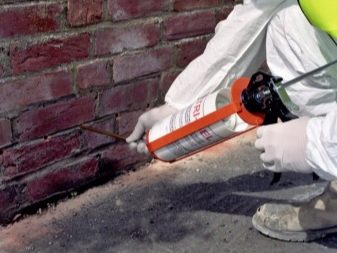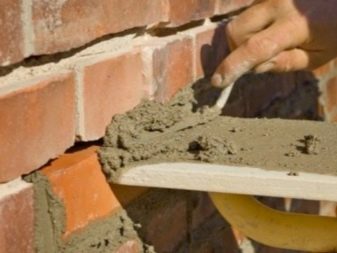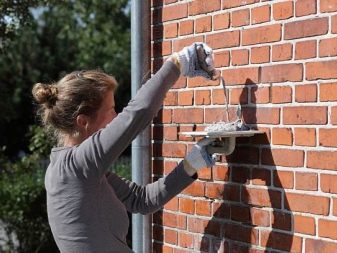Brickwork injection process
Injection is one of the most effective types of repair work and is widely used for excavation and renovation of masonry. This technique allows you to prevent further destruction of the wall and can significantly extend the life of the structure.
Causes and consequences of the destruction of masonry
Violation of the external and internal integrity of the brickwork occurs for many reasons. The most common of them are incorrect calculation of the maximum allowable load on the foundation and violation of construction technology. In addition, the masonry begins to collapse with heterogeneity of soil, the absence of expansion joints and the close occurrence of the upper aquifers.As well as among the reasons note shrinkage of the foundation, violation of the depth of its inception and deformation processes in the beams, resulting from exposure to moisture.
The excessive weight of snow cover also influences. A thick layer of snow exerts considerable pressure on the supporting structures, as a result of which they are weakened and destroyed. Often the cause of the beginning of the violation of the integrity of the masonry is leaking roof. Water penetrates inside the brick walls and has a damaging effect on the material.
The destruction of the masonry occurs gradually, and the stress arising at its first stage is completely imperceptible to outside view. Only a professional, who by the appearance of microcracks will be able to recognize the beginning of destructive processes, can sense the wrong. Over time, microcracks grow, join together, form a network and attack vertical seams, which, in turn, threatens a serious violation of the integrity of the building. The most negative consequence of such processes is the unimpeded passage of cold air into the walls, entailing their freezing.
With the onset of heat, the brick begins to thaw, causing the wall to dampen and become a favorable environment for the appearance of mold. In addition, the decorative coating also begins to crack and peel off, and plaster and ceramic tiles fall off. At the initial stages of masonry destruction, when visible deformation processes are not yet observed, rust spots may begin to appear on the walls. This indicates ongoing corrosion processes on the reinforcement or embedded parts located inside the wall. To combat the destruction of brick walls, as well as to increase their strength and durability, use the method of injection - sequential injection into the masonry of various materials.
The essence of the method
The essence of the method is that inside the brick wall through the holes made - the holes - under high pressure serves certain compositions. The injection of mixtures occurs through thin pipes, equipped with packers (injectors), and is carried out through building syringes or pumps. The mixture penetrates the problem area and fills all voids, pores and cracks.As a result, a reliable barrier to water penetration is created, and the process of destruction stops.
The frozen mass has a moderate reinforcing effect and enhances the insulating properties of the bases of grounded objects. The method of injection allows you to avoid rearranging the main walls and extend the life of the structure. In addition to repair work, the method is used for arranging intra-wall waterproofing during the construction of underground tunnels, storage facilities with drinking water, underground parking lots, basins and sewers.
Repair compounds
To restore the brickwork use five mixtures that differ in the method of application, performance properties and functional purpose.
Micro-cement mixtures are widely used for injection and are compositions that are based on finely ground granulated cement clinker. This composition occupies all the microvoids inside the wall, and after curing it forms a substance similar in its performance characteristics to concrete. The advantages of such mixtures is absolute ecological purity,due to the absence in their composition of toxic and toxic impurities, ease of preparation of the solution and low cost. In addition, micro-cement mixtures are fully compatible with silicate and polymer resins, which allows them to be used for particularly difficult repairs of the lower row of masonry. The disadvantages of the material include a long solution hardening time. In some cases, it can reach four hours - the time depends on the outside temperature and the consistency of the prepared mixture.
Polyurethane resins are moisture-curing compositions consisting of hydroactive polyurethane, and are able to effectively eliminate water leaks. This is due to the ability of the material at the slightest contact with moisture to instantly foam and form a spongy structure. According to the intensity of foaming, resins are divided into two types. The first is represented by one-component compositions, which can increase its original volume 50 times. Resins of the second type have a two-component design and are used when it is necessary to form elastic filling with minimal foaming, but with high rigidity.Such compositions are somewhat inferior to the resins of the first type in terms of the amount of foam produced; they are capable of increasing their volume only 20 times.
The advantages of polyurethane resins are high adhesion to most surfaces, the ability to control the intensity and speed of polymerization, resistance to chemicals and absolute harmlessness to human health. In addition, the material does not shrink and is completely resistant to vibration. There are no particular drawbacks to polyurethane resins. The material copes with the functions assigned to it and has only positive feedback.
Epoxies are two-component blends of low viscosityconsisting of polyester polyols and modified isocyanate. The material does not contain solvents and polymerizes during the day. The composition is used to seal the exterior seams of the facade, eliminate cracks, strengthen the masonry and restore the integrity of the walls. The advantages of epoxy resins are high adhesive properties, no shrinkage and high mechanical strength.Among the minuses note the high cost of the material and a long time of complete polymerization.
Methyl acrylate gels are capable of increasing the volume during solidification, and are used to restore brick walls and increase their waterproofing properties. Injection with acrylic can in some places be renewable, and in the early stages of destruction it can even out the laying. The advantages of the mixture are good adhesion, resistance to acids and solvents, the ability to work on wet surfaces, good fluidity and low cost of the compositions. The downside is the possibility of using the tool only in the initial stages of masonry destruction.
When a brick is too neglected, the use of methyl acrylate will be ineffective.
Silicate resins are two-component compositions, which are based on liquid glass. The tool is resistant to shear deformation and is excellent in resisting to alkalis, salts and acids. Silicate injection can be used to make partial repairs to the masonry without dismantling it. The advantages of the material include low cost, rapid solidification and no shrinkage.There are no particular defects in the material, with the exception of the installation process, which consists of two separate stages, the first of which requires filling the cracks with liquid glass, and the second with calcium chloride.
Technology repairs
Repair brickwork by injection begins with the preparation of the working surface. Remove grease, plaster, bitumen, paint from the wall, clean it from dirt and dust, and grind if necessary. Loose cracks with crumbling edges must be embroidered, and the whole area should be wetted with plenty of water. Wetting is best done using a sprayer, and in case of its absence, using a wet rag or sponge.
After the water is fully absorbed into the surface, you can begin to form holes. They should be made at an angle of 60 degrees to the surface of the wall at the rate of two pieces for one crack. The diameter of the holes is usually 20 mm, and the depth varies from 5 to 15 cm. When filling all masonry with the solution, the distance between adjacent holes should not exceed 15–20 cm. After all the holes are formed, they should also be moistened.
In order to securely fix the tubes in the holes, it is recommended to fix them with cement mortar.
When the composition hardens, you can begin to fill the cracks, using a building syringe or a hand pump. The choice of tool depends entirely on the volume and complexity of the work. So, to eliminate small cracks with the help of epoxy resins, it makes no sense to purchase a special pump, while for repairing the serious destruction of masonry with the use of cement mortars, one cannot do without it. Injection is recommended to perform in the direction from the bottom up, moving from the center of the work area to its edges. Then, after the time required for the composition to harden, it is necessary to carefully remove the fixing devices from the holes, cover the grooves with cement mortar and make the finish.
The process of brickwork injection is a unique solution to the problem of restoring collapsing structures. Rigging allows you to do without dismantling and partial disassembly of the bearing walls, makes it possible to quickly and inexpensively repair them.
For information on how to inject brickwork (restoration by injection), see the following video.
